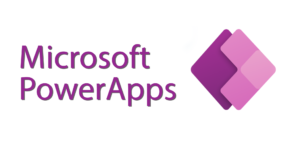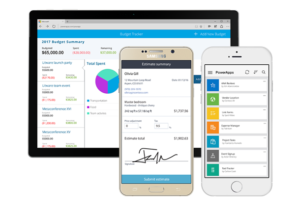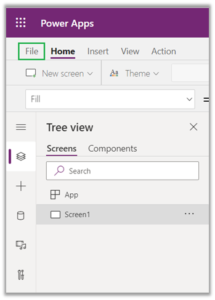
Today we explore key capabilities in Office 365 and SharePoint to create business solutions, with a focus on PowerApps.

What is it?
Microsoft PowerApps is an easy way to make business apps for mobile devices. PowerApps at its core is a Platform as a Service. It allows you to create Mobile Apps that run on Android, iOS, Windows (Modern Apps) – and with almost any Internet browser.
PowerApps is also a mobile app! Historically, mobile app development has involved creating apps for each operating system they need to run on (iOS, Android, Windows). This essentially triples your development work, triples your support costs, and increases the development resources you need to create business apps. But with the PowerApps App everything is easier , every PowerApps you create runs through the PowerApp App. It takes care of the differences between the operating systems and just allows you to run your apps. It is essentially a container that makes mobile apps much easier to use across mobile platforms.

What does it do?
PowerApps provides a nice drag-and-drop user interface to allow you to add different controls (i.e. text field, choice field), media (images, video, camera controls for your phone), forms, and screens to construct a mobile app. It also allows you to connect to external data sources or store data directly inside the app. Once you have created an app, all you have to do is publish it and share it with your organization.
What doesn’t it do?
PowerApps was designed to be used for Business Mobile Apps – meaning internal use. You’re not going to create a PowerApp to share with everyone in the world. They are not designed for consumer consumption, mostly due to the licensing model, as well as technical limitations with sharing with external users. Also, all of the functionality in PowerApps is “no-code.” So your in-house developers won’t be able to add any custom HTML or JavaScript to the underlying device. If PowerApps can’t access anything external to it, then neither can your users or your developers. While it sounds like a limitation, it can also be a good thing. Restricting rogue code from your PowerApps will allow the platform to maintain stability and ease-of-use for the long-term. If you need custom business logic that PowerApps just cannot provide, you can connect to any custom REST API with PowerApps to get the best of both worlds.
Lastly, PowerApps functionality may not meet your exact requirements for what you are looking to do with your mobile apps today. But because this is a cloud-oriented service, you can be sure that Microsoft will regularly release new updates, features, and enhancements.
